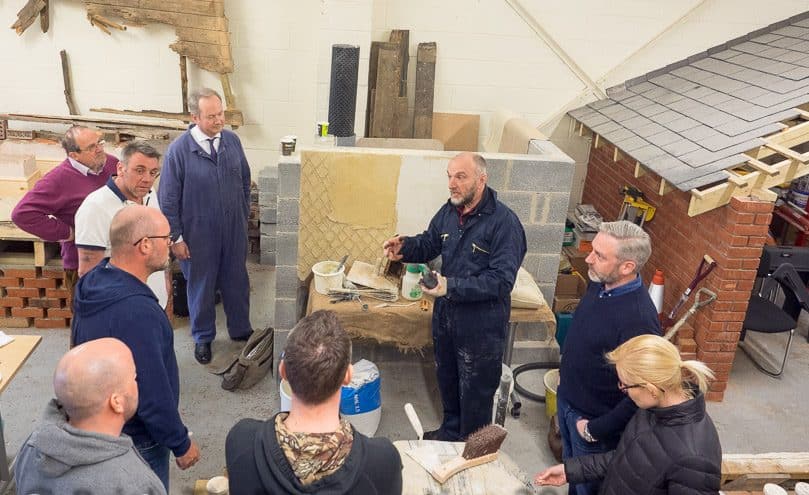Our boss, Bryan Hindle was able to attend this widely anticipated course on traditional repairs last Thursday. This is the second event of its kind, which the SPAB (Society for the Protection of Ancient Buildings), has delivered at the PCA training shed. Bryan missed the inaugural day last year, because he was on a pre-booked holiday…. Doh!
We’ve been working in all kinds of buildings, including traditional ones for 30 years. However, the last time Bryan attended dedicated training on traditional methods was several years ago – so it was time for a refresher. There were a good number of PCA members and non-members in attendance for the training. Douglas Kent is a Director of The SPAB and a chartered surveyor and has a master’s degree in Building Conservation. His team included Andrew Ziminski of Minerva Conservation, who is a Willam Morris craft fellow (1998). Joe Bispham provided the timber section. He is a master joiner and carpenter with an MSc in conservation and Phd too. These three guys have vast experience and we are very grateful to the SPAB and PCA for getting them together to organise the day.
Bryan will be writing a detailed technical review on his blog later in the week. However the course was basically as below:
The William Morris legacy:
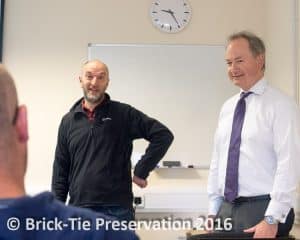
First up was Douglas, with his presentation on the history of the SPAB. It’s founding principals are clearly still held in very high regard and these were explained. William Morris was the founder and it really is remarkable, how he was able to galvanise such a lasting and valuable resource to conserve ancient buildings. His values, which put conservation before renovation are sound. Nobody could really fault the SPAB’s approach, when dealing with traditional buildings.
Douglas covered the legal framework; historic and up to date. The various listed grading nomenclature were explained. Whilst we know the basics, you cannot beat getting real specialist advice. For example, as Douglas explained “A listing, no matter what grade covers everything, both inside and outside a building”. Sounds, obvious? Well, everyone in the room had previously talked to clients, builders and even surveyors, who had mentioned that the house involved was “only listed in respect of the fireplace, or the east wing”. This is nonsense of course. Everyone needed a timely reminder of their legal responsibilities and this session hit the spot. We were then taken through several case studies and all in all it was a fascinating morning.
Douglas is working hard to conserve his own traditional grade 1 listed house. He was full of hints and tips for doing things the SPAB way – excellent.
A SPAB fellow’s day job.
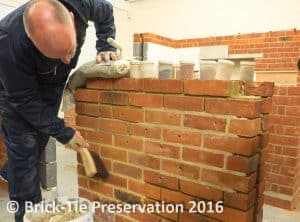
The next session was Andrew’s. Andrew is a William Morris fellow and stepped in for the day at short notice to help out. A master mason and conservator, he has vast experience, when it comes to traditional repairs and materials. He used real case studies from historic and prestigious projects to illustrate methods and materials. The traditional approach to dampness, erosion and structural repairs.
Bryan was particularly interested in Andrew’s thoughts on Lime grouting and Cintec stitching of historic buildings. This is something we get involved with. Andrew is a real ‘lime junkie’ and his passion for lime in all its guises was obvious. He has a pragmatic and practical outlook, which to those present, who are from a ‘tools’ background (like Bryan), struck an appealing chord.
Carpentry as opposed to joinery – a master’s view.
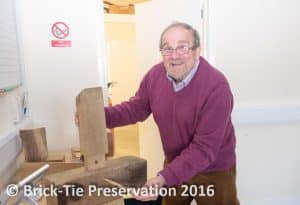
After lunch, Joe was up for his presentation. He carried so much gravitas it was palpable. With a full lifetime working on and conserving historic joinery, he’s a goldmine of knowledge. Joe’s love for the work and the buildings too, spilled over everyone.
His frank appraisal of the various methodologies was a treat. Working with oak is his passion, but of course he gave us the important fundamentals, which can dictate using Green or seasoned oak, slow-grown Baltic pine and chestnut. Whilst he deferred to some of those present on Death Watch Beetle and Fungal growth, he doesn’t need any lessons from us. He knows how to cut out the right amount of wood to make a long lasting and suitably traditional repairs. A real craftsman and so generous with his knowledge.
Traditional repairs get dirty.
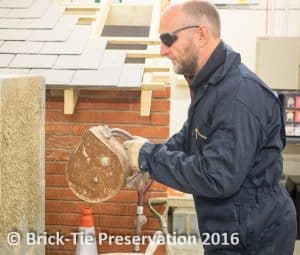
Roughcast lime render using a tyrolean gun – outstanding!
The afternoon then progressed into Andrew’s practical demonstrations. A chance to see and handle traditional materials and tools. Bryan was still smarting from his recent hernia operation, so apart from poking his fingers in the stuff and taking pictures he couldn’t join in. The sessions started with a brief guide to the most common lime based mixes – fat limes; feebly, moderately and eminently hydraulic limes. Natural additives like pozzolans, ashes, clays, various sands and grits.
The importance of the right aggregate was covered, with lots to handle and write about. Preparation is key and Andrew talked us through his approach; From careful removal of old cement mortar, surface preparation, acquisition of the best materials. Then onto selection of tools, gauging, mixing, application and protection. Andrew pointed and rendered and applied roughcast too.
To finish he demonstrated lime washing. All the time he never stopped answering questions and elaborating, when he felt that the questioner needed a bit more explanation – super stuff.
Seeing the materials being handled, mixed and applied by a craftsman of Andrews stature was a treat. A final chat followed back in the class. The day flew by for Bryan because there was just so much in it.
If you have an old building which needs a consummate lime expert Andrew’s your man.
Thanks to PCA and SPAB
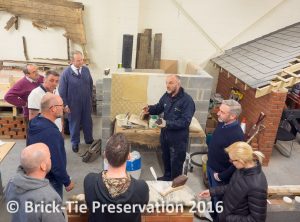
We’d like to thanks Douglas, Joe, Andrew and the SPAB for their patience and the work they’ve put in. The Property Care Association and the training committee are constantly looking to add great training and this was a blinder.
The PCA training shed is a unique resource and very much the brainchild of PCA CEO Stephen Hodgson. It has developed into a national centre of excellence for our industry.
There are those who fear the arrival of a ‘damp and timber specialist’ to the door of a listed building or traditional property. They may well be right to worry in some cases. However, PCA and it’s best members are working hard to deliver effective and sound solutions no matter how old, or new a building is.
Is it worth attending the traditional repair day? Yes, you don’t need to be a member of the SPAB, PCA or even in the trade. Owners of traditional buildings and anyone with a keen interest in conservation and traditional repairs would love it. If you are a built environment professional, there are 6 CPD points available for this information packed day. A ‘must attend’ in Bryan’s opinion. Our surveyors Mike and Paul are already booked onto the next course. The lessons learned and reinforced, will assist in ongoing improved outcomes, for to owners of listed buildings and traditional homes as well as the precious houses they live in.
